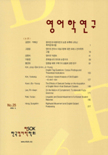Rightward Movement and English Subject Postposing
Rightward Movement and English Subject Postposing
- 한국영어학학회
- 영어학연구
- 영어학연구 제25호
-
2008.06217 - 239 (23 pages)
- 55

The purpose of this paper is to discuss the phrasal structures of rightward movement, especially with respect to English subject postposing. If rightward movement is allowed in a language, the outcome of such movement raises an interesting question about their phrasal/clausal structures: whether the structures of such construction are “symmetric” as Ross (1967), Reinhart (1983), Saito (1994), Pesetsky (1995) and many others have advanced, or “antisymmetric” as Larson (1988), Kayne (1994), Takano (1996), and Rochment and Culicover (1997) have advocated. Based on his thorough comparison of “symmetric” and “antisymmetric” syntax, Takano (2003) has recently proposed a “weakened” version of antisymmetry, the “Weakly Antisymmetric” approach to syntax. In this paper, I investigate Takano’s proposal, and show that his weakened version of antisymmetry faces difficulty both on empirical grounds as well as on conceptual grounds. Therefore, Takano’s claim that his weak antisymmetric approach supports Chomsky’s (2000) Set-Merge/Pair-Merge distinction is no longer tenable. It is shown that English subject postposing (Huddlestone & Pullum 2002, Hong 2004) and French subject postposing (Radford 1988) as instances of rightward movement also support symmetric syntax as well.
1. Introduction<BR>2. Is syntax really (Anti)symmetric?<BR>3. Subject postposing and syntactic symmetry<BR>4. Conclusion<BR>References<BR>
(0)
(0)